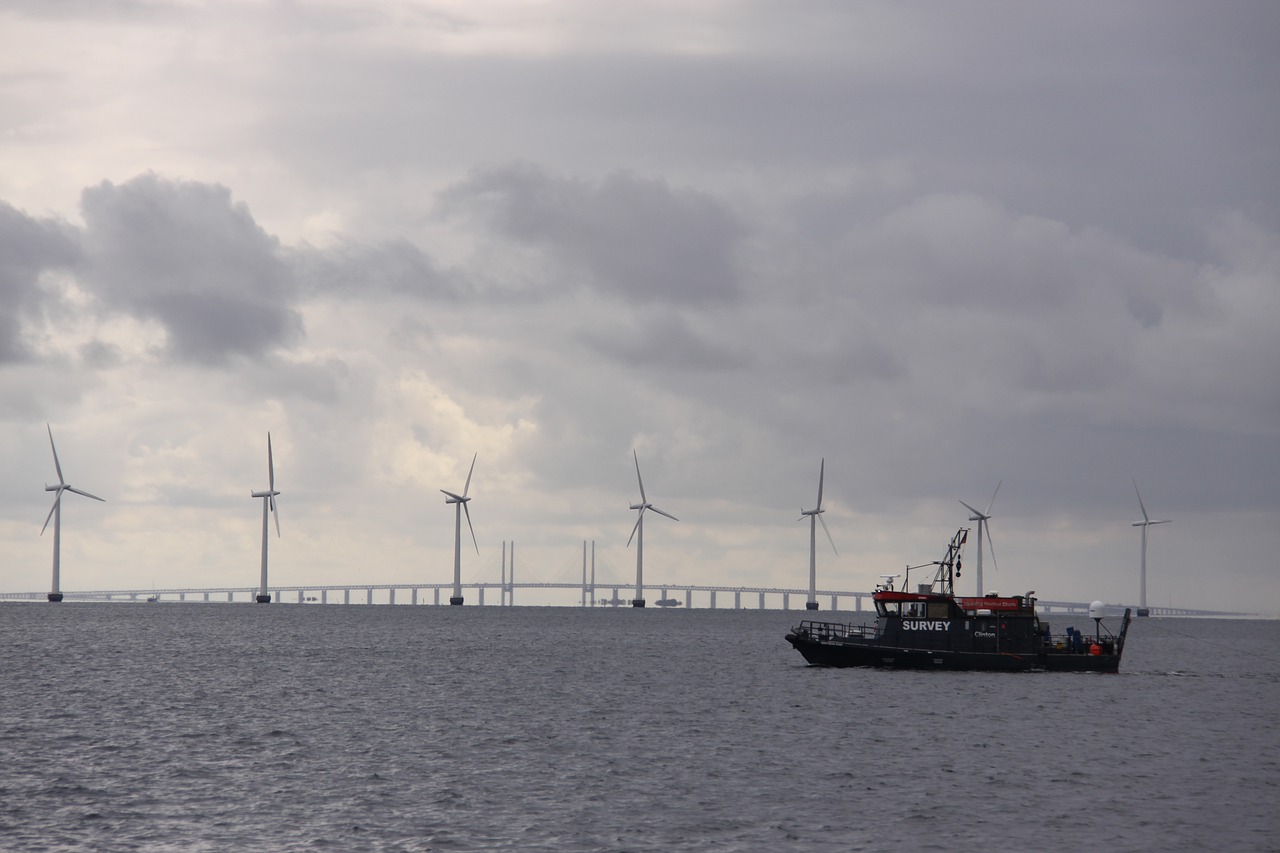“Location, location, location” is a real estate mantra, but in offshore wind, “getting there” may soon be the leading chant.
That is, how efficiently are vessels serving your developing offshore wind installation? Signs in this growing sector point to developers procuring services wherever viable, and that’s good news because ultimately it means innovation.
Feeder systems using barges to transport turbines out to wind turbine installation vessels appear to be the wave of the present and the future. They may be the first fleet, so to speak, of what will be a new U.S. fleet of purpose-built vessels modified or fabricated specifically for the new offshore wind sector.
While some critics cite such feeder systems as a sort of end run around the Jones Act, others say the systems are practical.
“This [system] is often cited as a workaround to the Jones Act, but it is also influenced by the movement to bigger turbines. I think this will become the industry standard moving forward,” said William Cotta, Offshore Wind Supply Chain Director for Rhode Island Commerce Corp., a quasi-public agency that is the official economic development organization for the state of Rhode Island. “As with the oil and gas industry, as the industry and projects scale [up], the vessels become more specialized. The installation method for a 5-megawatt turbine doesn’t make sense for the 15 megawatt or 20 megawatt turbines of the future. A wind turbine transfer vessel that could carry equipment for six turbines, may only be able to carry one or two.”
So as many experts already have predicted, the planned exponential growth in U.S. offshore wind should mean historic growth in vessel construction in the near future. In the meantime, offshore developers will use what they can.
“From a financial perspective, the extremely high day rates for installation vessels are also driving the move to feedering solutions," Cotta said. "With wind farms moving increasingly farther offshore, the feedering system will become the industry standard to increase the productivity of the wind turbine transfer vessels on scene, and reduce the cost of transit. The offshore wind industry receives significant pressure to use local content in every new market they enter. Using feedering solutions allows installation contractors to leverage locally available deck barges, and local shipyards to retrofit those barges.”
As the domestic shipbuilding industry scales up to sustain offshore wind development and its growing needs, new purpose-built vessels will be built. But right now, there’s a dearth of serviceable vessels for offshore, some say.
“We do not have an inventory of U.S.-flagged vessels that are purposely suited for the operations required within an offshore wind farm,” said Brigitte Hagen-Peter, marine asset and operations manager at Siemens Gamesa.
The need for purpose-built vessels is expected to grow fast in upcoming years. Many offshore wind experts, even some located outside the U.S., agree that shipbuilders here will need to be tapped more and more as the domestic offshore wind market grows. While some firms may believe crossing the Atlantic with their own equipment to serve the U.S. offshore wind industry is feasible, the Jones Act is meant to boost the construction of such vessels here, said Rafael Riva, vice-president of commercial operations for Lloyd’s Register.
“We cannot continue thinking about European vessel — that is not going to work for the U.S.,” Riva said in a recent WorkBoat webinar on the future of the offshore industry.
One of Riva’s fellow panelists was Dominion’s director of generation strategy, Karl Humberson. He sees the transition to purpose-built vessels as inevitable.
“There’s a reason Europe and Asia have moved to purpose-built vessels. [It’s] the cost of building these wind farms,” said Humberson, director of generation strategy for Dominion. “The U.S. will need purpose-built vessels, specifically for this job of offshore wind.”
Dominion Energy is doing its part by currently developing a vessel specifically made for the offshore wind sector. Such creations will likely be the norm, in the future.
“Feedering systems are new to the offshore wind industry, but have been and will be the primary method for constructing offshore wind in the U.S.,” Cotta said. “The two examples I know of are the Block Island Wind Farm and the soon to be built Vineyard Wind 1 project. The Coastal Virginia Wind Farm was mobilized out of Halifax, Nova Scotia, on foreign vessels.”
The Block Island Wind Farm was built out of ProvPort and Quonset in Providence and North Kingston, R.I. The Brave Tern, a Fred Olsen wind turbine transfer vessel, was used for construction of the wind farm, with a Seacor liftboat [335 Class] providing a feedering solution, Cotta noted.
“The nacelles [for the job] were brought straight from the factory in France,” Cotta said.
Recently, the Vineyard Wind project announced that DEME Offshore US will provide a foreign wind turbine transfer vessel for the project, while Foss will provide the feedering solution.
“It is notable that Foss does not own any jackup vessels, so it will likely be a feedering solution with a barge. Also, DEME’s newest installation vessel Orion does not appear to be a jackup,” Cotta said. “This is an interesting development that may be some future-proofing to deeper water installations and the growth of floating offshore wind. Jackup vessels will only work in shallow water, so as development moves deeper, the technology to stabilize vessels will become more important both for feedering and installation vessels.”
For more on the future technology of feedering solutions, keep an eye out for Marin USA and Crowley Marine Services, Cotta said. The companies were awarded research grants by the National Offshore Wind Research and Development Consortium.




